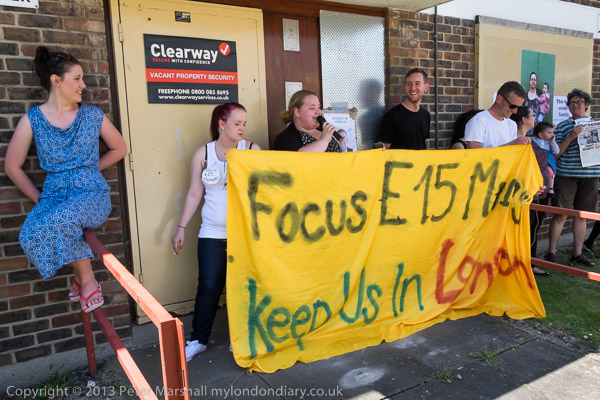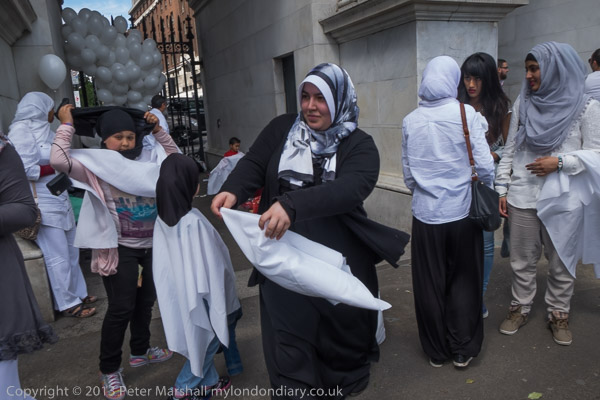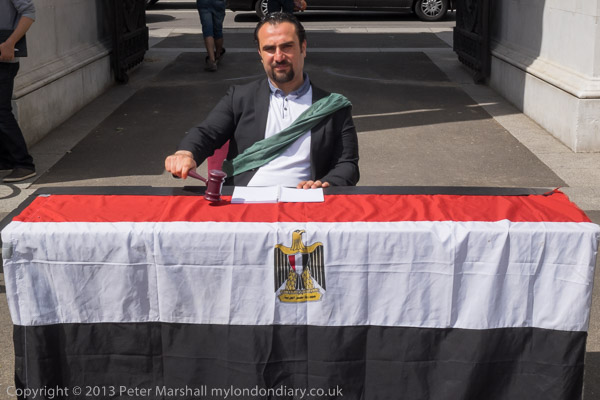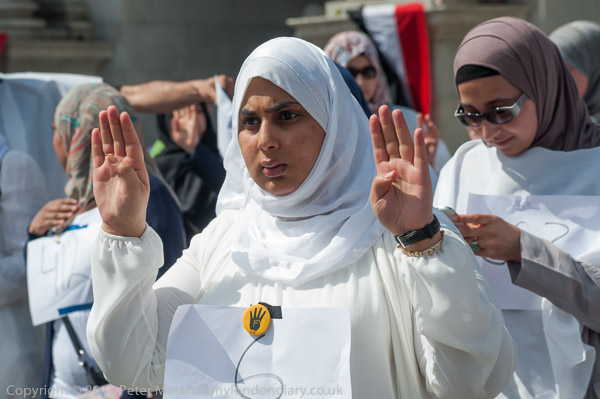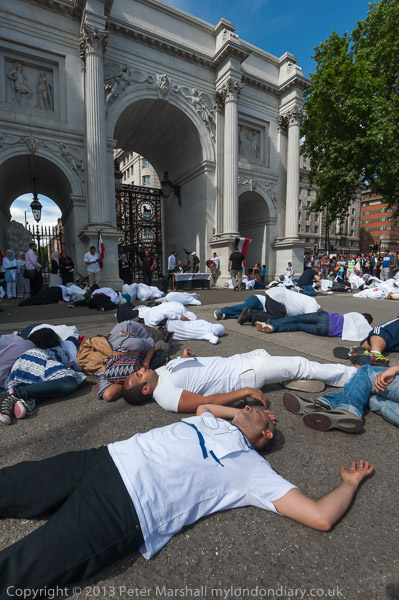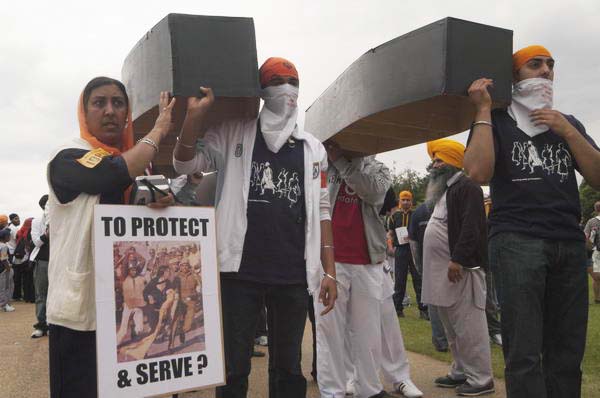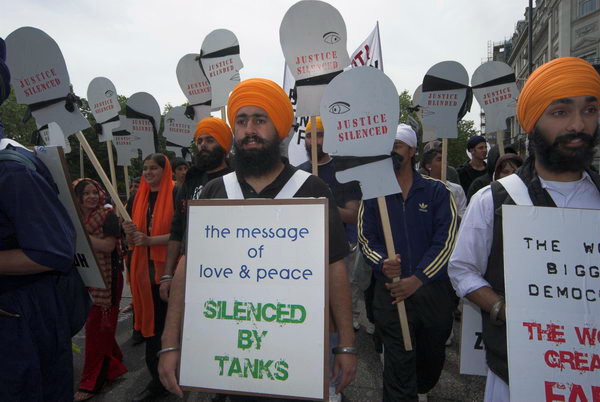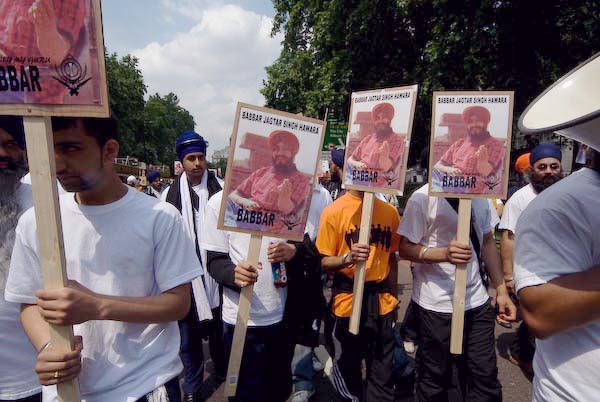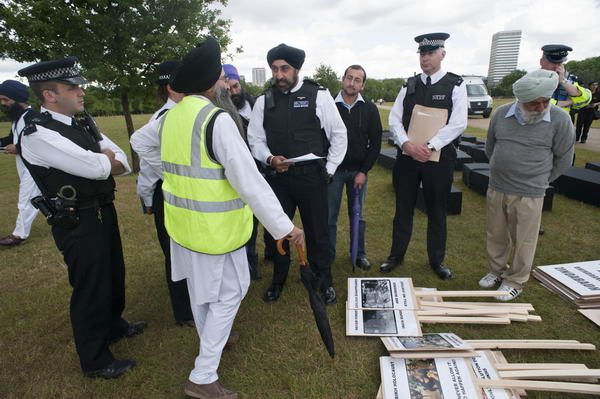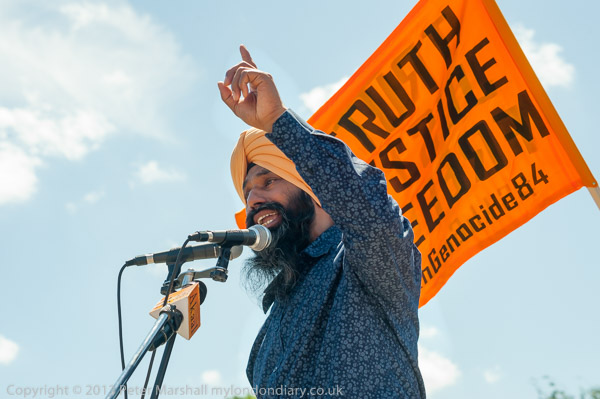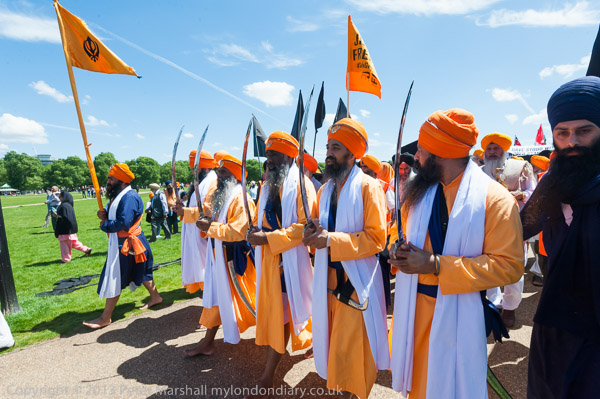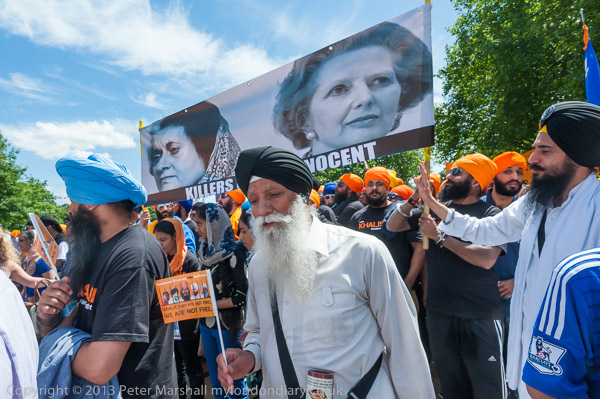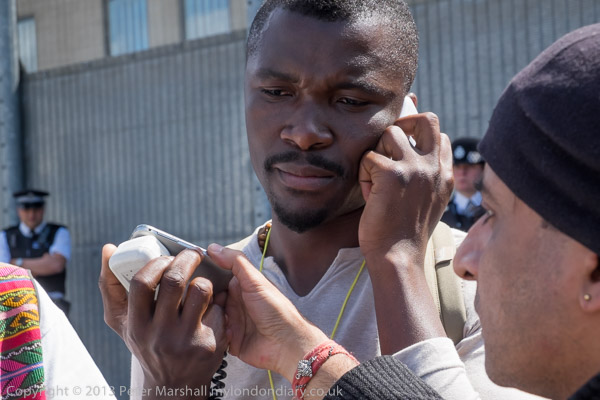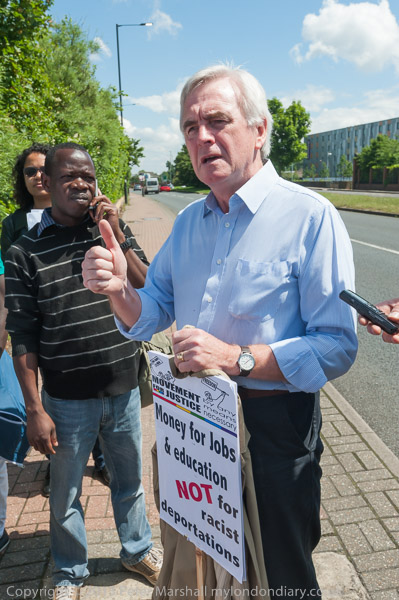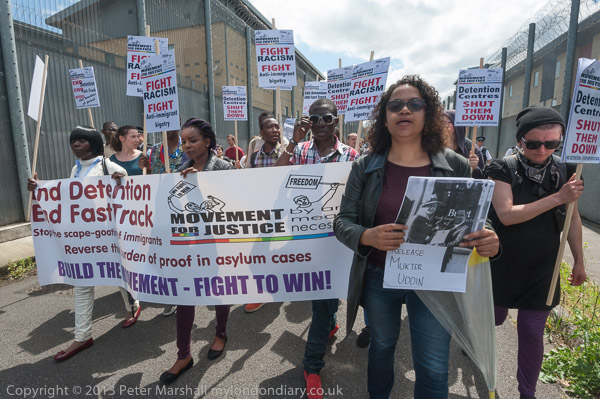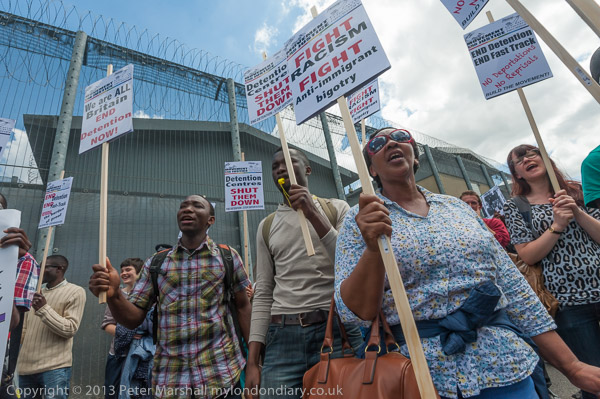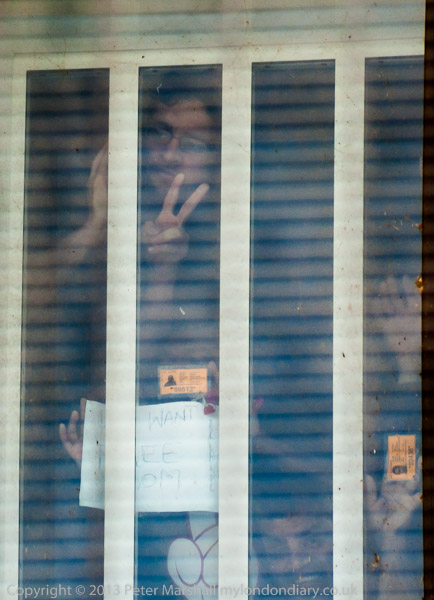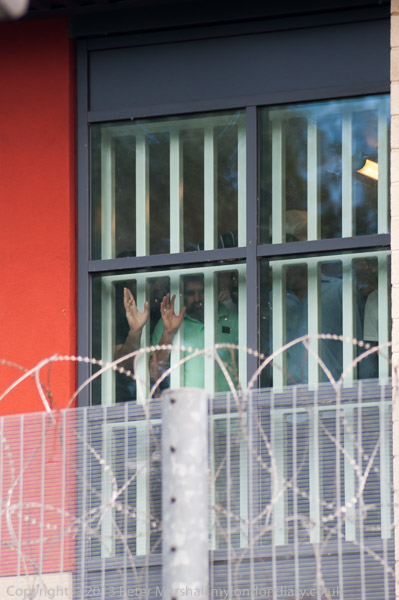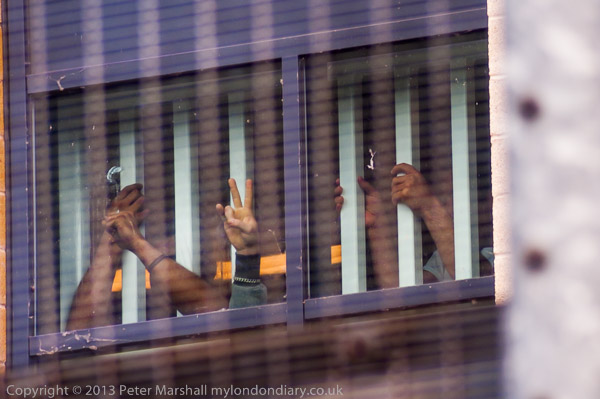I’m not sure whether I look forward to the annual World Naked Bike Ride in London or not. I’ve nothing against looking at more or less naked people on bicycles, or even photographing them, but it does produce some photographic problems. I’d be a lot happier about it if the ride were rather more obviously a protest, but despite the efforts of a few taking part, things like posters and placards are few. Only a very small minority of riders have flags or posters on on their bikes; slightly more have some slogans painted on their bodies, but it’s still a fairly low percentage.
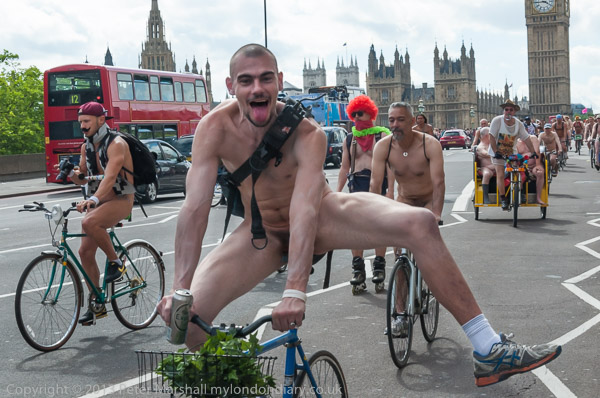
Of course the ride attracts a lot of onlookers, many with cameras, there for various reasons. But it also seems to attract a number of stewards who like to shout and insult photographers, and I don’t welcome being insulted while trying to do my job. Back in previous years I’ve had some discussion with the organisers about this, and in particular about them trying to impose policies on photography which tried to restrict the rights of photographers, which were silly, unlawful, inappropriate and unenforceable. I think they have moved away from this, but there are still one or two individuals who like to run around shouting at people.
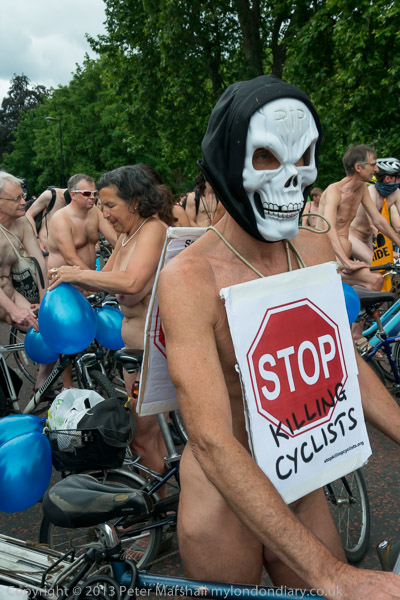
Most of the riders seem happy enough to be photographed, at least by photographers who behave sensibly, and I rather feel that if people don’t want to be photographed without their clothes on they should stay dressed in public. And you don’t have to be nude to ride – the advice is to be “as naked as you dare.”
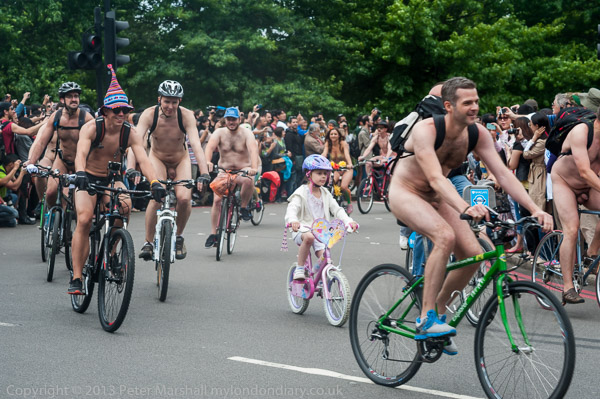
In photographing the event I try to concentrate on those riders who are clearly trying to make a point – generally about some aspect of ‘car culture’ or bike safety – and also those who have taken a great deal of trouble over their appearance. The set of pictures on My London Diary makes the event look far more focused than it is in reality. My pictures also show a considerably higher percentage of women riders, mainly because more of them appear to have body paint or slogans that make them of interest; the ride itself is far more male.
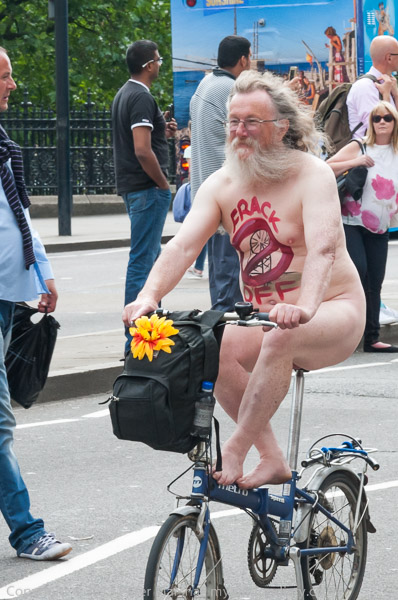
I’m also aware that while I have no problems with naked bodies, they may offend some people – and some publications. Facebook and other web sites have a great problem with nudity and sometimes ban even the least offensive of images. When thinking of what to post, particularly through agencies, and also when taking pictures, I make sure to take as many as possible that are unlikely to offend. So as well as thinking about framing, I’m also often carefully positioning handlebars and other objects to obscure parts of the anatomy. And just occasionally I have indulged in a little burning in of areas to hide detail that might offend some.
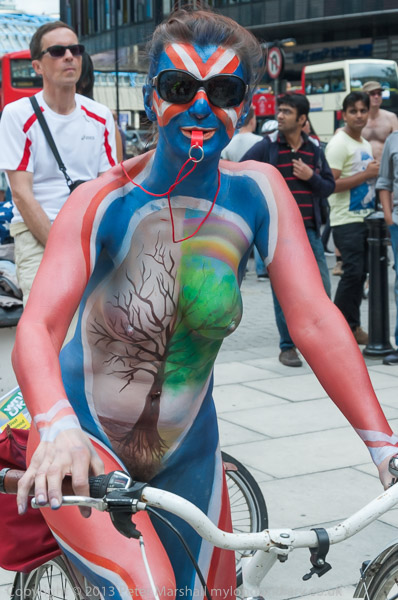
In previous years, many of those who rode in the event have appreciated the images that I took, and have told me so. I’ve yet to have a single complaint (though having said this it will doubtless happen this year) either from those in my pictures or those looking at them. But if you think you may be offended, please don’t look at the images at World Naked Bike Ride London on My London Diary.
Continue reading Naked Riders
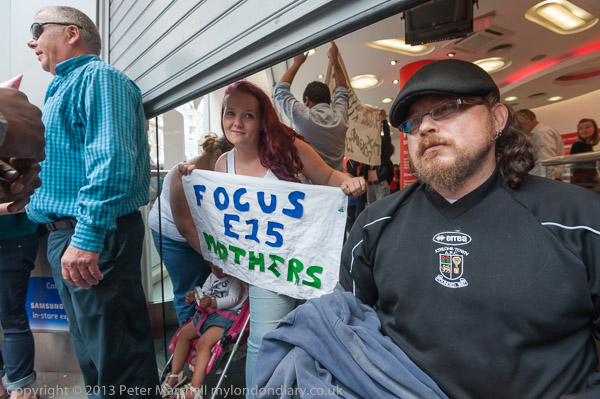
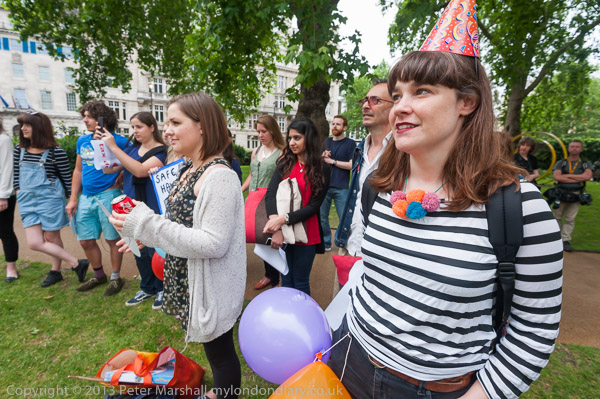
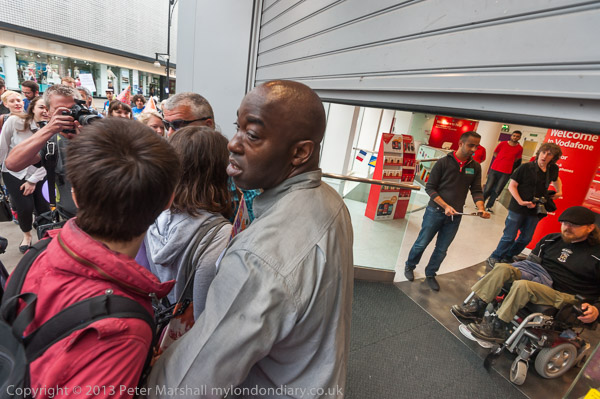
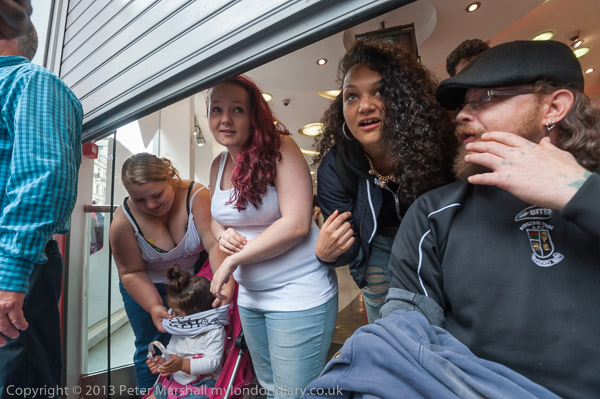
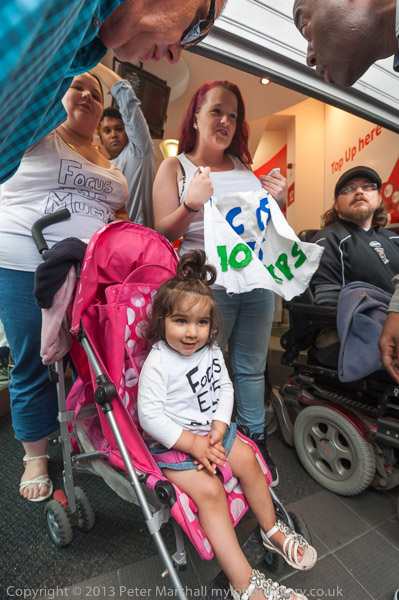
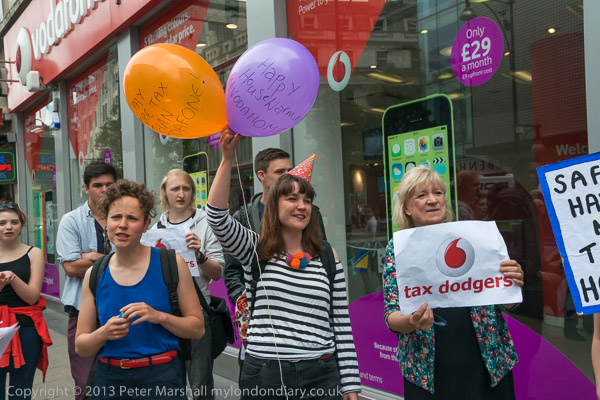
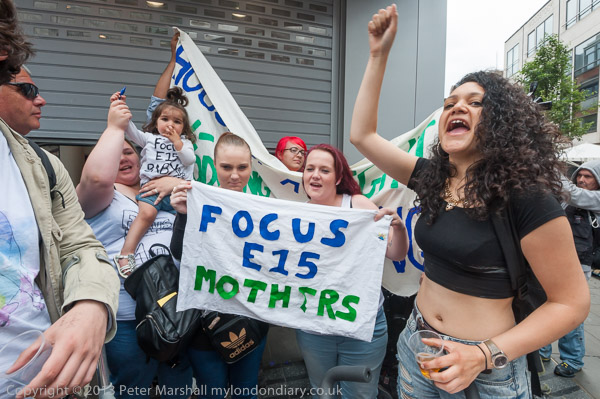
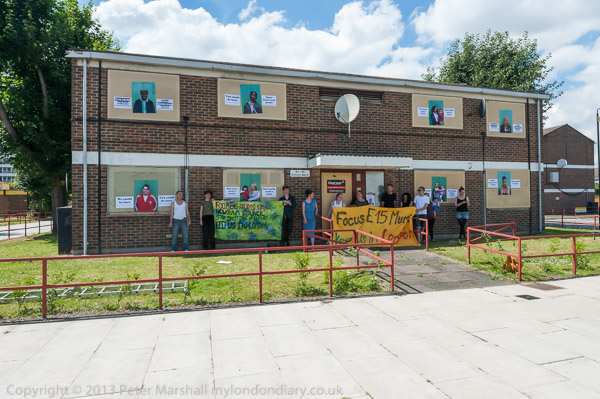
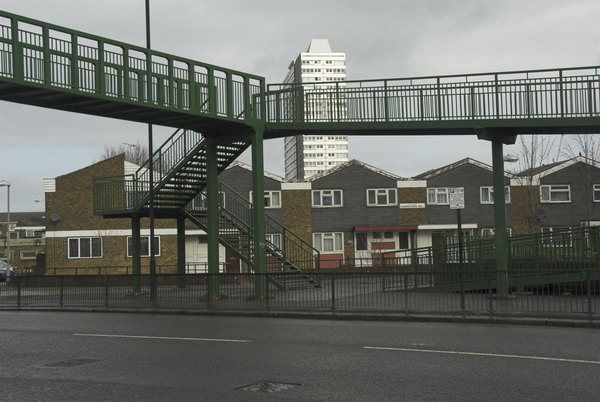 Carpenters Estate, 2007
Carpenters Estate, 2007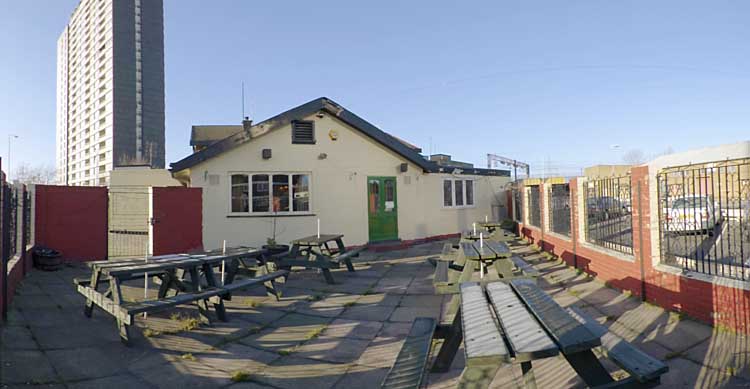 Pub garden on Carpenters Estate, 2005
Pub garden on Carpenters Estate, 2005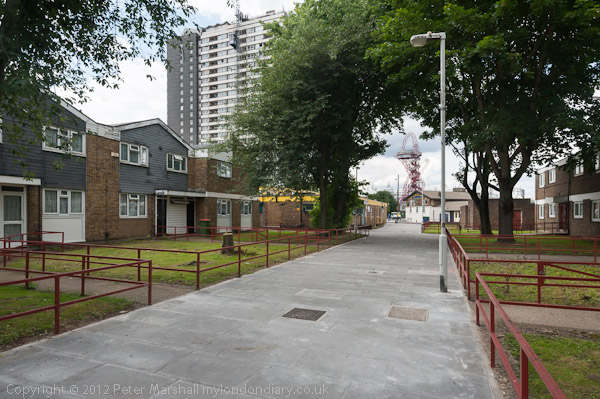
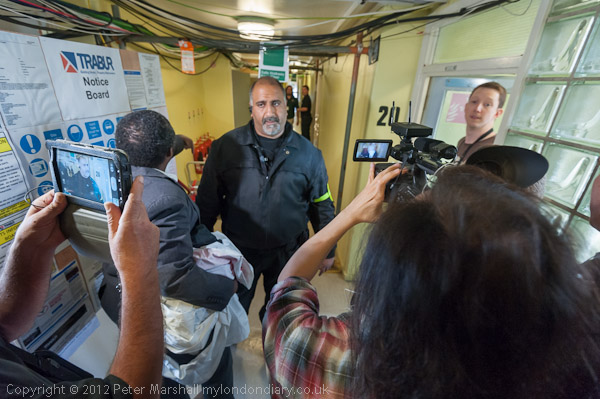
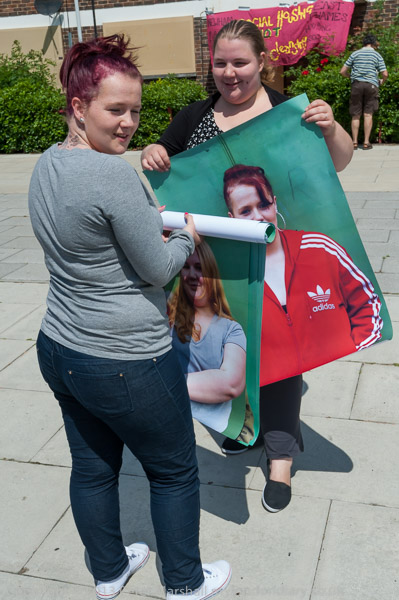
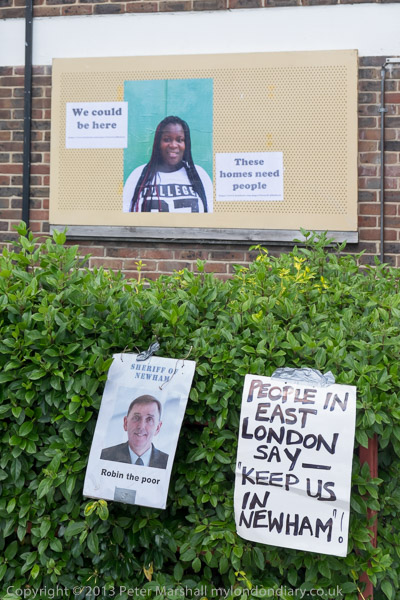
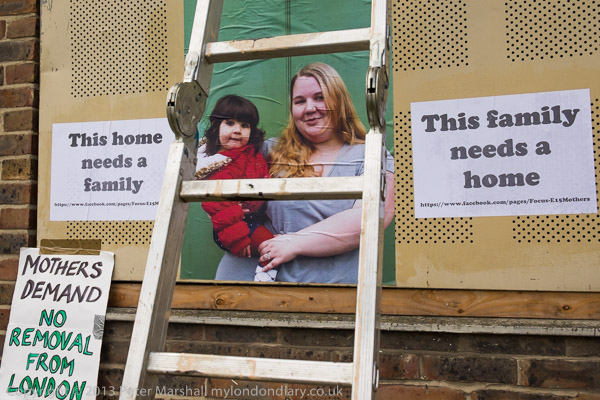 Jasmin and her daughter look out from a poster.
Jasmin and her daughter look out from a poster.